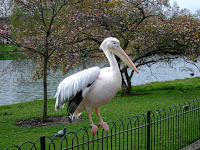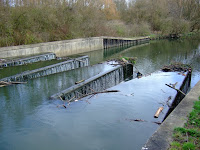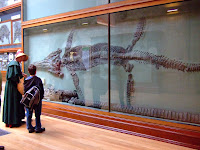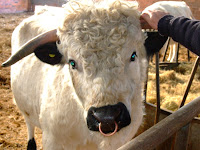 There is only one way for the public to enter the perimeter of St James’s Palace, just off the Mall, and that is to go to a Sunday service in the Chapel Royal. To make it just that little bit more difficult, services are only held there between October and Easter. So with only a couple of Sundays still available, we set off for Piccadilly.
There is only one way for the public to enter the perimeter of St James’s Palace, just off the Mall, and that is to go to a Sunday service in the Chapel Royal. To make it just that little bit more difficult, services are only held there between October and Easter. So with only a couple of Sundays still available, we set off for Piccadilly.As is our way, a walk needs to be incorporated into the day so we selected another walk around the area that we have visited twice in recent months and found new things that we had not seen before.
 Naturally, we detoured to Green Park to see the daffodils and crossed the Mall to check out the spring flowers in St James’s Park. While there we came across a pelican perched, in what seemed a most uncomfortable position for a web-footed bird, on the fence around the lake. It seemed quite happy to pose there for the many pictures that were being taken.
Naturally, we detoured to Green Park to see the daffodils and crossed the Mall to check out the spring flowers in St James’s Park. While there we came across a pelican perched, in what seemed a most uncomfortable position for a web-footed bird, on the fence around the lake. It seemed quite happy to pose there for the many pictures that were being taken.
However, it was time for the service and it was just as well we were early as the small chapel was almost at capacity by the time the service started. The Chapel Royal choir has a long heritage and the 10 choirboys looked splendid in their red and gold livery.
 Just around the corner is Spencer House, also only open on Sundays when you are able to take a guided tour around the recently restored principal rooms. Nothing much is original as it was all stripped before the war, so the fitting and furniture you see are mainly modern copies; there is acres of gold leaf and the effect is absolutely stunning.
Just around the corner is Spencer House, also only open on Sundays when you are able to take a guided tour around the recently restored principal rooms. Nothing much is original as it was all stripped before the war, so the fitting and furniture you see are mainly modern copies; there is acres of gold leaf and the effect is absolutely stunning. Stepping even further into history we visited the British Museum to see the current exhibition, The First Emperor, a look at the life and times of the Emperor of Qin who had created for his after-life the terracotta army. Among the displays was a warrior re-created in the colours that the entire army were originally painted. It looked fantastic: what a sight the original army must have looked 2000 years ago when they shut the doors on the vast underground horde.
Stepping even further into history we visited the British Museum to see the current exhibition, The First Emperor, a look at the life and times of the Emperor of Qin who had created for his after-life the terracotta army. Among the displays was a warrior re-created in the colours that the entire army were originally painted. It looked fantastic: what a sight the original army must have looked 2000 years ago when they shut the doors on the vast underground horde.






























